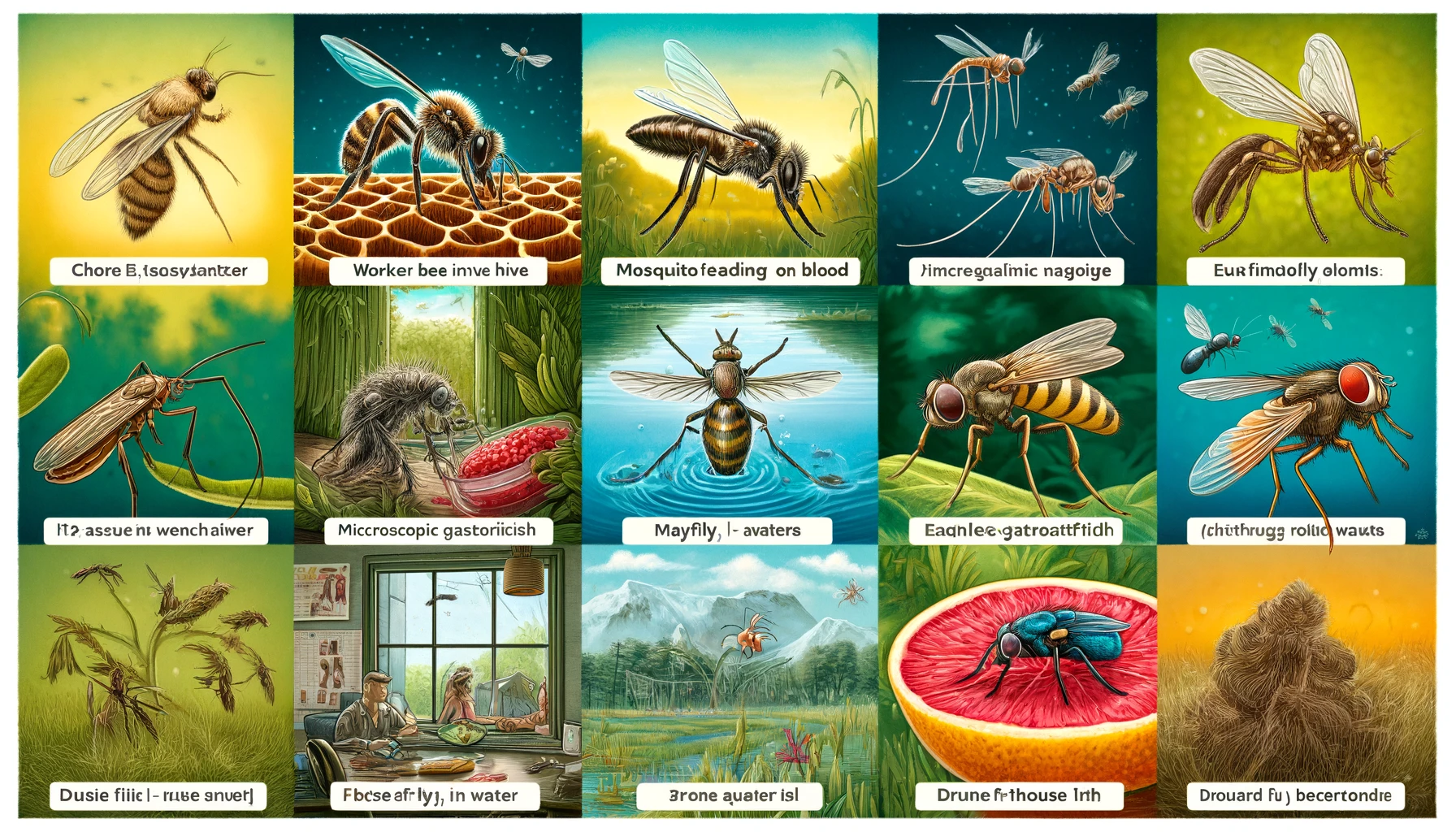The animal kingdom is full of incredible diversity, from creatures that live for centuries to those with fleeting existences. Today, we delve into the lives of seven animals whose time on Earth is astonishingly brief. Understanding these creatures not only highlights the diversity of life but also offers insights into their unique adaptations and life cycles.
Worker Bees: Vital to Hive Activities but Short-Lived
Worker bees are the backbone of the hive, engaging in essential activities such as cleaning, caring for the young, and foraging for food. Despite their critical roles, worker bees have remarkably short lifespans, living only a few weeks during the busy summer months. Their short life is a consequence of their intensive labor. The hive’s efficiency and survival depend on the tireless efforts of these bees, making their brief lives profoundly impactful.
Lifecycle and Duties
Worker bees start their lives by cleaning the hive and feeding the larvae. As they age, they transition to foraging, a dangerous job that ultimately leads to their early demise. The high energy expenditure and exposure to the elements ensure that they burn out quickly, contributing to the hive’s productivity and sustainability.
Mosquito: A Few Weeks of Blood-Sucking Life
Mosquitoes are infamous for their role in transmitting diseases such as malaria, dengue fever, and Zika virus. These tiny insects have a lifespan of several weeks. Female mosquitoes, in particular, have a voracious need for blood, which they use to develop their eggs.
Reproduction and Lifespan
After mating, female mosquitoes seek out blood meals, which are crucial for egg development. Once the eggs are laid, the cycle begins anew. The brief life of a mosquito is dominated by reproduction, ensuring their rapid population growth and persistence in various environments.
Mayfly: The Ephemeral Beauty
Mayflies are known for their extraordinarily short adult life, which can last from a few hours to several days. These insects spend the majority of their lives as aquatic nymphs, a stage that can last several years.
Brief Adult Stage
Once they emerge as adults, mayflies focus solely on reproduction. They do not eat during this stage and quickly mate and lay eggs before dying. This ephemeral existence underscores the importance of the larval stage, where they accumulate the energy needed for their short adult life.
Gastrotrich: Minutes to Days in Aquatic Microcosms
Gastrotrichs are microscopic aquatic organisms with lifespans ranging from a few hours to a few days. These tiny creatures are found in marine and freshwater environments, where they play crucial roles in the ecosystem.
Rapid Life Cycle
Gastrotrichs reproduce quickly, often through asexual reproduction, which allows them to rapidly colonize new environments. Their brief lifespan is balanced by their ability to reproduce in large numbers, ensuring their presence in aquatic microcosms.
Housefly: Rapid Generational Turnover
The common housefly is another example of an animal with a short lifespan, typically living for a few weeks. Houseflies are known for their rapid life cycle, which includes multiple generations within a single year.
Life Cycle and Survival
Houseflies lay hundreds of eggs during their short lives. These eggs hatch into larvae, which quickly develop into adult flies. The rapid generational turnover helps houseflies adapt to changing environments and exploit new resources efficiently.
Fruit Flies: Genetic Research Champions
Fruit flies, or Drosophila melanogaster, are invaluable to genetic research due to their short lifespans and rapid reproduction. They typically live for about 30 days, during which time they can produce hundreds of offspring.
Research and Lifespan
Fruit flies have been instrumental in advancing our understanding of genetics, development, and evolution. Their short lifespan and simple care requirements make them ideal for laboratory studies, providing insights into complex biological processes.
Drone Ants: Brief Lives Dedicated to Mating
Drone ants are male ants whose sole purpose is to mate with the queen. These ants have short lives, often only surviving a few weeks. After mating, drones typically die, having fulfilled their role in the colony’s reproductive cycle.
Role and Lifespan
Drone ants are born from unfertilized eggs and are not involved in the day-to-day activities of the colony. Their primary function is to ensure the continuation of the colony’s genetic lineage, a role they perform efficiently within their brief lifespan.
In conclusion, these seven animals highlight the diversity of life strategies in the animal kingdom. Despite their short lifespans, each plays a crucial role in their respective ecosystems. Understanding these creatures enriches our appreciation of the natural world and the myriad ways life has adapted to survive and thrive.

Leave a Reply